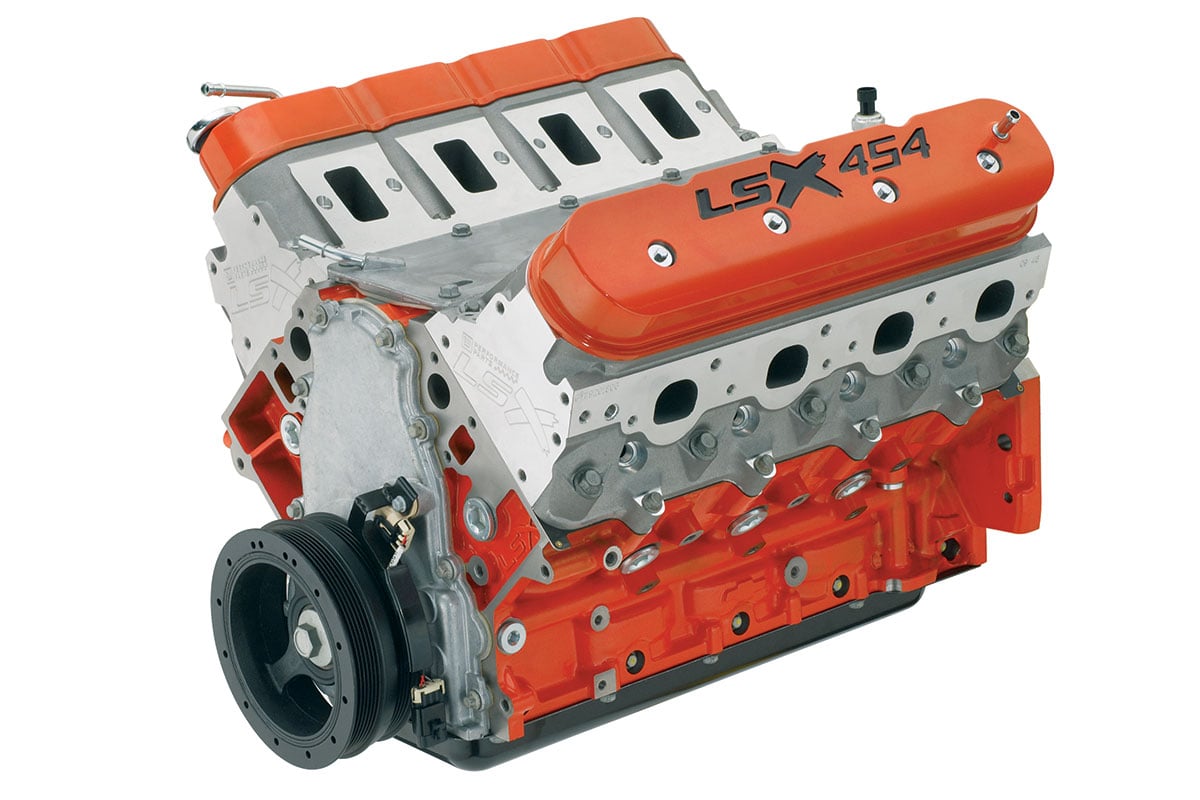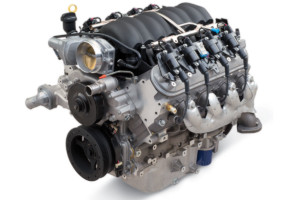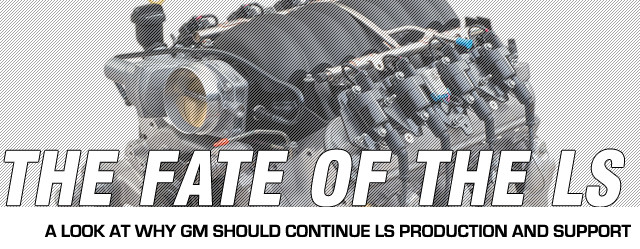 The Chevy small-block V8 has been a staple of domestic performance since the 1950s, and for nearly two decades GM’s LS series V8 engines has served as the modern interpretation of the classic pushrod recipe for horsepower. Known for its relative light weight, strength, reliability, and ability to dish out some serious performance, the LS has enjoyed a long life between the fenders of new Camaros, Corvettes, GM’s full-size pickups, and other models that required the kind of grunt that the LS engine series can deliver.
The Chevy small-block V8 has been a staple of domestic performance since the 1950s, and for nearly two decades GM’s LS series V8 engines has served as the modern interpretation of the classic pushrod recipe for horsepower. Known for its relative light weight, strength, reliability, and ability to dish out some serious performance, the LS has enjoyed a long life between the fenders of new Camaros, Corvettes, GM’s full-size pickups, and other models that required the kind of grunt that the LS engine series can deliver.
Beyond its place on the assembly lines of General Motors products, the LS series has also become a go-to V8 for engine swaps in everything from Volvo 240s to Mazda MX-5s. With some variants having an aluminum block and all with relatively compact packaging, the LS engines have proved to be a great choice for those looking to maintain (or improve) weight balance and add a healthy dose of thrust without having to hack the vehicle apart to get it.
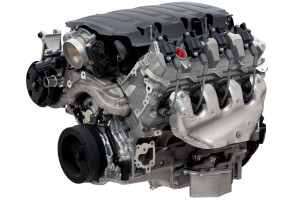
The Gen-V small-block is similar to the Gen III/IV engines, including a deep-skirt cylinder block, but modern technology such as direct injection, continuously variable valve timing and an all-new cylinder head design set the LT platform apart from its predecessor.
With the introduction of the new LT platform in the C7 Corvette, the future of the LS series engines is becoming more nebulous. The reality of the LS’s future as a production engine really starts to set in when we being to look at the LT1 finding its way into GM’s new trucks, SUVs, and the upcoming sixth generation Camaro. The supercharged LT4 is currently serving up thrills in the new Z06. The direct-injected LT’s proven-yet-modernized design yields a cutting edge SBC for the modern age — one which offers inherent power and fuel efficiency advantages over the LS series.
That doesn’t mean that production of the LS engines has no reason to continue, nor that the LS series no longer has prospective engine bays to call home. “The market will determine the future of the LS”, says Dr Jamie Meyer, performance parts program manager for Chevrolet Performance. Given that, here’s why we think production of LS engines shouldn’t fade any time soon.
Evolution Of An Icon
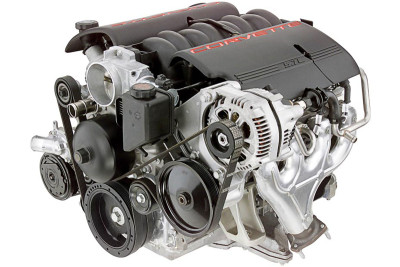
The LS1 represented a big step forward from the Gen II LT platform it replaced, offering significantly increased durability, improved efficiency and more power right out of the gate.
Superseding the Gen II LT series engines, the third generation small-block V8 debuted in 1997 with the all-aluminum LS1 that was introduced along with the then-new C5 Corvette, while iron block versions of the LS1 quickly found their way into GM’s full-size truck line.
Among the numerous advantages the LS engines have over its predecessor, the strength and durability of the block was one of the most immediately obvious. With the aluminum LS engine being nearly as strong as the Gen II and Gen III iron blocks exceeding the capabilities of its predecessor by a wide margin.
Sharing little with the Gen II engines aside from similar displacement, external dimensions, and rod bearings, the LS engines proved to be far more robust than the series they replaced, making the development of higher output versions of the LS1 like the 400 horsepower LS6, which debuted in the C5 Corvette Z06, a far easier task.
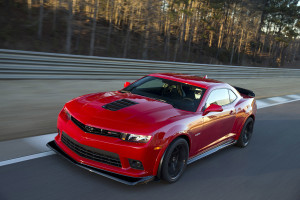
The 505 horsepower, naturally-aspirated LS7 that powers the Camaro Z28 features a forged steel crankshaft, forged titanium connecting rods and hypereutectic pistons, all in the name of increased performance while maintaining durability.
While GM was off to a great start with the LS series, it wasn’t until the Gen IV engines debuted in 2005 that things really started to reach full potential. The modulator architecture of the LS platform makes it extremely popular with enthusiasts since every one of these LS engines carries with it multiple identical characteristics. These include:
- 4.400-inch bore centers
- Six-bolt, cross-bolted main bearing caps
- Center main thrust bearing
- 9.240-inch deck height
- Four bolt-per-cylinder head bolt pattern
- 0.842-inch lifter bores
With these identical features throughout the engine lineup, GM had the flexibility to create a multitude of different LS offerings, yielding a roster of 4.8, 5.3, 5.7, 6.0, 6.2 and 7.0-liter displacements, front wheel drive configurations, forced-induction and flex fuel-compatible setups all joining the mix.
The track-honed 505 horsepower LS7 has become a modern legend for its capability in cars such as the C6 Corvette Z06 and Camaro Z/28, while supercharged offerings like the 556 horsepower LSA and 638 horsepower LS9 have pushed the boundaries of modern high-performance output, remaining formidable (and relevant) to this day.
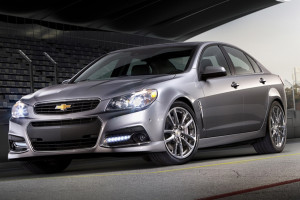
The Chevrolet SS is among the last vehicles currently in production which still utilizes the LS3, tuned to 415 horsepower.
Meanwhile the 425-plus horsepower LS3, which served as the standard engine in the C6 Corvette, the manually equipped fifth generation Camaro SS and Chevrolet SS, the Pontiac G8 GXP and several high-performance Holden models has become synonymous bread-and-butter V8 performance for its bulletproof durability, copious low end grunt, and its wide availability. Along with the LS1 and LS2, those attributes have made the engine a star with the aftermarket, as it has proven its ability to respond well (and stand up to) modification. The sheer abundance of this trio of engines out in the wild means finding a cheap way to make a lot of power is easier than ever.
The Cult Of LSx
It’s estimated that some five to seven million LS engines have been produced over the past 18 years, yielding a massive contingent of enthusiasts who swear by the platform.
Along with the engines installed on production vehicles on GM’s assembly lines, a swath of LS platform crate engines have been offered by Chevrolet Performance as well, including the LSX376-B15, which features a forged rotating assembly that can handle up to 15 pounds of boost, and the 620 horsepower. The naturally-aspirated LSX454, which requires no more space under the hood than a production LS engine.
And then there’s the race-bred LSX454R, GM’s most powerful crate engine ever offered with 750 horsepower at 7,000 rpm, delivering performance that was formerly exclusive to engine builders and those with the coin to commission them. Now it’s available with a phone call, a trip to your local Chevy Performance dealer parts counter or a few clicks of the mouse over at Jegs.com as PN 809-19260835.
The LS platform might not be GM's latest and greatest when it comes to V8 technology, but with almost two decades of development under its belt there's a lot of proven technology to work with. While you might not get the bragging rights of the Gen V stuff, you do have a wider range of options for displacement, power, and overall configuration.
For those looking to go fast on a budget, the incredible amount of interchangeable parts between the engines in the LS family means that garage builders have been mixing and matching cylinder heads, intake manifolds, camshafts, connecting rods, and other components to further boost performance, all without a financial investment that goes beyond pulling components at salvage yards or scouring online ads for second hand parts. But, as ubiquitous as the LS engines have become in modern performance, there’s some legitimate concern that the platform’s future isn’t set in stone.
A Changing Role
With the introduction of the fifth generation LT platform in 2014, the life of the LS engine as a production line engine began to quickly wind down. With the upcoming sixth generation Camaro transitioning over to the LT1, the LS engine is now the exception rather than rule, used on vehicles like the limited production Chevrolet SS, a model whose future remains uncertain.
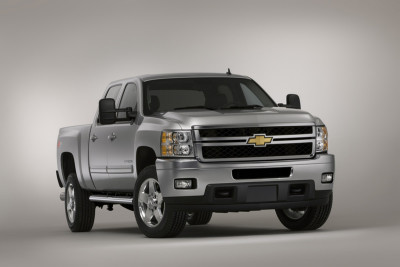
When it comes to GM V8 production, as muscle car guys we tend to think of the Camaro and Corvette, but it’s General Motors’ full size truck line that will proliferate the company’s latest V8 platforms – they sell hundreds of thousands of these pickups every year, and the vast majority of them are packing V8 power.
When the last of the LS-based models in the company’s portfolio are either updated to use the LT platform or killed off, it will of course change the nature of the LS platform substantially. General Motors will still need to produce the engine in limited quantities in the upcoming years for the service and repair of vehicles currently on the road however, in terms of its development – both in production and crate form – GM isn’t ready to offer a specific road map at this point.
“LS will remain in the Chevrolet Performance line-up much the way that the small block and big block do – despite not having a production vehicle to call home,” says Meyer. While that’s a good sign, the rest of the story is a bit less encouraging. “The LT1 and LT4 will become the present and future of the crate engine line up from a performance V8 standpoint,” said Meyer.
The LT1 and LT4 will become the present and future of the crate engine line up from a performance V8 standpoint. – Dr Jamie Meyer, Chevrolet Performance
It’s an advanced and capable design to be sure, and with GM’s wide adoption of the LT series V8 in production models across the board, it’s safe to assume that there will eventually be an abundance of these engines floating around, much like the ubiquity of the LS platform now.
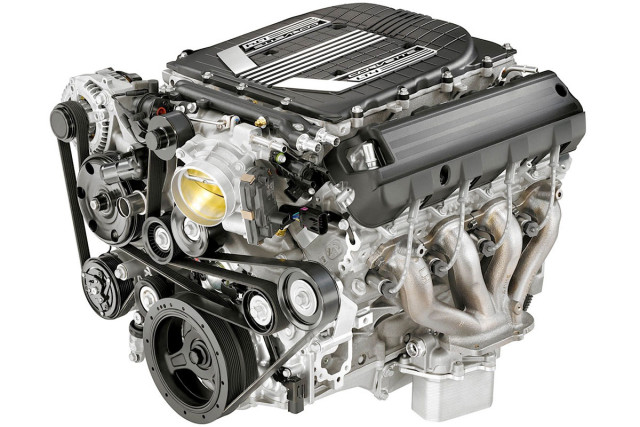
The supercharged, 6.2-liter Gen V LT4 V8 represents the latest top-spec offering in V8 performance from GM, both on the production line and in crate form. With 650 horsepower and 650 lb-ft on tap it’s certainly no slouch. If you’re looking for that kind of power from a naturally aspirated LT engine, you’re not getting it from the factory at this point.
In the meantime the aftermarket is still developing ways to improve on GM’s designs, as is General Motors. The LT platform’s advanced design require even more engineering savvy to find ways to further advance the technology. Which in turn, usually equates to more expense.
Demand Dictates Supply
On GM’s end, the investment to continue producing LS platform engines appears minimal. The tooling and supply chain for the platform’s components already exists, so for the most part we’re really just talking about raw materials and labor.
Development of the LS platform may be a closed book at this point, but while GM further hones the LT series engines there are numerous LS series options for high-performance crate engines. In contrast, the 460 horsepower LT1 and the supercharged, 650 horsepower LT4 are the only two choices currently available from the factory, and the LT4 has yet to be added to Chevrolet Performance’s crate engine roster (it’s expected to be offered later this year).
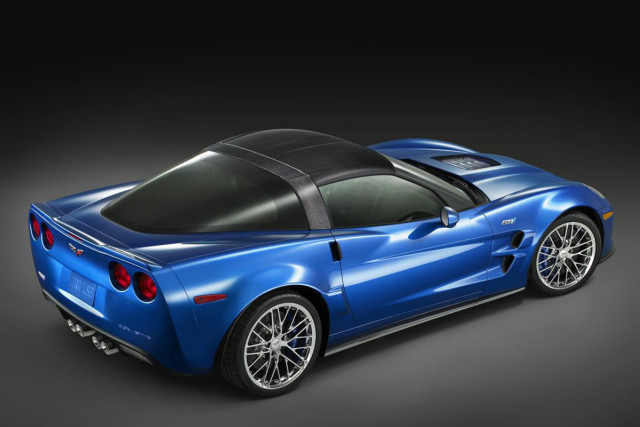
The 2009 Corvette ZR1 represented the pinnacle of factory production line output for the LS platform. With the supercharged 6.2-liter LS9 cranking out 638 horsepower at 6,500 rpm. The new LT4 has it beat by a few ponies, but the LS9 has the advantage of additional years of refinement and durability testing.
When you take into consideration the price differential between the Gen IV and Gen V engines – an LT1 crate engine costs nearly $3,600 more than a forced induction-ready LS engine with similar output – there’s still a solid argument to be made for the LS platform to live on from an affordability standpoint.
We have no doubt as the years go by and GM refines and expands the LT platform that great things are in store. Judging from the LT1 and LT4, there is a solid foundation to work from. At this moment, the LS series still offers more versatility, affordability, and a thoroughly proven track record. For enthusiasts, those attributes are more likely to be at the top of their engine wish list than being at the forefront of small-block technology.




